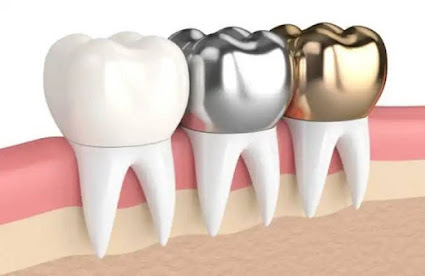What Causes Periodontal Pockets, and Can They Be Reversed?
What Are Periodontal Pockets?
First, let's start with what periodontal pockets are. Periodontal pockets form when your gums pull away from your teeth. This occurs when plaque and tartar buildup around teeth cause inflammation and infection. As the inflammation gets worse, it causes the gum tissue attachments and bone that hold your teeth in place to break down. Then, spaces or pockets form between the gums and teeth. Deeper periodontal pockets provide more space for even more damaging bacteria to collect. As pockets grow deeper, more bone loss occurs, and eventually, this can lead to tooth loss if gum disease continues untreated.
Main Causes of Periodontal Pocket Formation
The main cause of the formation of harmful periodontal pockets is poor oral hygiene, which allows plaque buildup on teeth. If brushing and flossing do not remove plaque regularly, here is what happens:
Plaque hardens into Tartar – Calcified plaque, called tartar, gets trapped along and under the gum line. Tartar is porous with bacteria and can't be removed by regular brushing.
Bacteria Grow – The plaque and tartar harbor harmful, infection-causing bacteria next to gum tissues. Toxins from the bacteria cause chronic gum inflammation and infection.
Gum Tissue Breaks Down – The bacterial toxins and your body's inflammatory response break down gum ligaments and bone, leading to pocket formation between teeth and gums.
Treatment to Reverse Periodontal Pocket Damage
The good news is gum pocket damage can often be reversed, especially when caught early. But it takes precisely following an expert periodontal treatment plan.
Initial periodontal treatment phases are aimed at controlling the gum infection and inflammation through:
Professional Dental Cleaning – Remove plaque, tartar, and bacteria with a thorough, deep cleaning above and especially below the gum line.
Can Gum Pockets Be Reversed?
Antimicrobial Medications – Prescription antimicrobial rinses or gels that reach gum pockets to suppress infection-causing bacteria.
Follow-up periodontal care focuses on regenerating lost gum and bone tissues, which can help shallow or eliminate pockets between gums and teeth.
Advanced procedures we offer for this include:
Flap Surgery – Fold back gum tissue to remove deep bacteria and tartar, then suture gums closer to teeth. It helps gums reattach at a higher level.
Bone Grafting – Filling in areas of bone loss with grafting material to allow bone regeneration.
Guided Tissue Regeneration – Using specialized membranes over bone grafts to help periodontal ligament and bone cells re-grow faster.
Growth Factor Application – Applying EMDOGAIN®, a protein gel, accelerates local gum and bone cell growth.
Laser Bacterial Reduction – A soft tissue diode laser targets any stubborn bacteria during cleaning. The key is following an ongoing periodontal maintenance plan to retain the regained gum and bone health over the long term. This includes regular dental cleanings and monitoring for any recurrent periodontal infections.
Consult Our Periodontal Specialists in Chicago, IL, About Reversing Your Gum Pockets
Has a dentist near you told you that you have concerns about gum pocket depths? An expert on periodontal disease treatment can evaluate your situation. We will inform you if your gum pockets can be reversed and detail an effective treatment plan.
Our periodontal services combine advanced procedures to reduce infection plus regenerative treatments to restore healthy gums and bones. Many of our patients significantly improve their periodontal health and pocket depths through our tailored ongoing care.
We are conveniently located in Chicago, IL, near Peterson and Kedzie avenues. Benefit from our experience with treating all levels of periodontitis and gum pocketing. Call Lawn Dental Center or use our online request form to schedule your gum disease examination.



Comments
Post a Comment